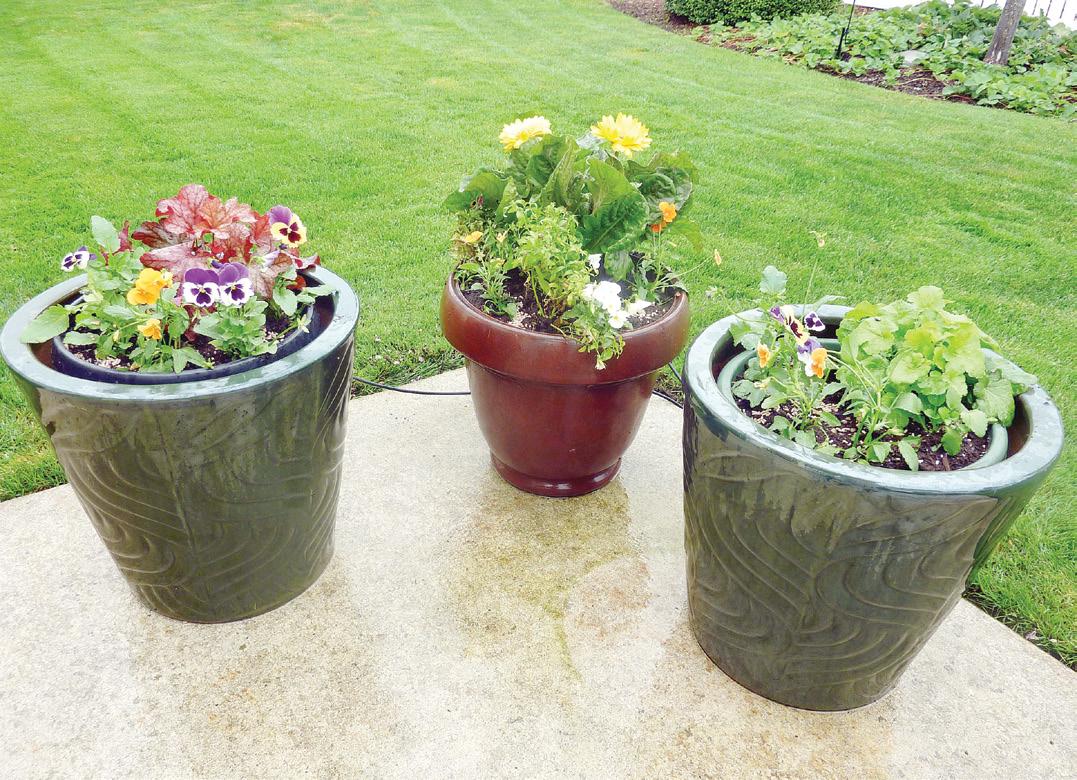Salvia farinacea, mealy cup sage. This is a great plant for colour into September.
S
Salvia the sage
alvia is really sage. And sometimes sage isn’t really salvia or sage. Confused? Common sage and diviner’s sage are both Salvia, but Russian sage is Perovskia and Jerusalem sage is Phlomis. Salvia, Perovskia and Phlomis are all members of the Lamiacea family, also known as the mint family. It’s the true salvias we’ll consider here, though, and their versatility in the garden. Floral sage Salvia farinacea, or mealy cup sage, is a reliable bloomer, sending out lovely spikes of blue, both powder blue and heavenly dark blue. The leaves on this one are different from most in that they are smooth and even glossy. The flowers look a little like lavender. It is perennial in its native home of Mexico and the southern US but grow it as an annual here in Canada. One favourite cultivar is ‘Victoria’. Salvia splendens, or scarlet sage, is another salvia that paints great swathes of crimson in formal plantings. It comes from Brazil and has been widely cultivated in the past few 14 • 2019
Salvia splendens, or scarlet sage.
hundred years. You can now get S. splendens in red, purple, peach, white and pink. It’s another perennial that we grow as an annual. Salvia sclerea, or clary sage, has interesting flower bracts that fade from a light base to a dark pink or mauve tip. Hailing from the Mediterranean basin, where it is biennial, clary has a long history in the herbal compendiums of European medicine. It is also used in aromatherapy. You can grow it from seed directly sown into your garden in early spring. Salvia viridis, sometimes called painted sage or annual clary sage, is prized for its beautiful leafy bracts of veined pink, purple or white. It comes from the Middle East and is an annual everywhere. The colourful bracts are excellent for dried arrangements. It may self-seed in your garden, so you’ll get it year after year. Salvia guaranitica, fascinating and beautiful, was made famous by its cultivar called ‘Black and Blue’. Extraordinarily drought tolerant, this salvia is perennial in its home of South America, but annual here. ‘Black and Blue’ is notable for its bottle-blue Issue 1
flowers encased in a black calyx. Once it starts flowering in mid-summer, it will keep going right until frost. Salvia nemerosa comes from Central Europe and is the parent of many cultivars. It is hardier than most other perennial sages, maybe to Zone 3. Look for light blue ‘Bumblesky’ or the darker ‘Sensation Deep Blue’. Hybrids. There are also several notable hybrids of salvia that have gained prominence, none more so than ‘May Night’, which may overwinter in your garden. It prefers cooler nights, which will keep the bloom for longer. ‘Madeline’ is remarkable for its blue and white blooms. ‘Hotlips’ has red and white blooms that are beautifully startling. And that would just be the beginning of the garden salvia possibilities. But salvia is much more than just a star on the ornamental garden stage. Herbal sage Salvia officinalis, known as common sage, is considered one of the essential herbs for British, North American, Italian and Middle Eastern cooks, used in such delicious foods as turkey stuffing and lasagna. Other localgardener.net














